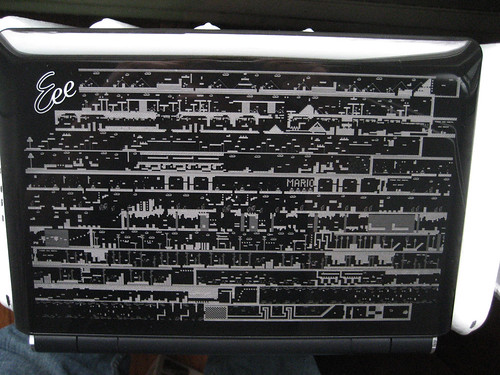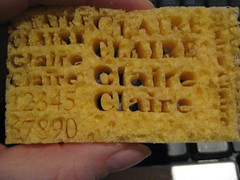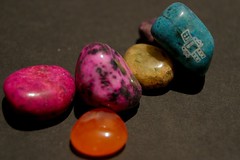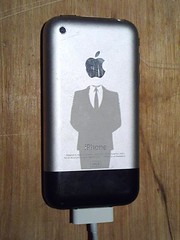At NYC Resistor we have a 35 Watt Epilog Mini 24 laser. The owner’s manual comes with a list of common materials like wood, acrylic, etc. Most of what I end up cutting is not a common material. Here are some of the settings for weird stuff we’ve collected at NYCR (and examples where available). There’s also a wiki page (no pictures) with more settings.
ASUS EEE PC 1000

Chris etched the entirety of Super Mario Land onto his EEE PC. Done in raster mode at 70% speed and 40% power. Took about 15 minutes. Suggested to leave the air assist OFF, as leaving it on causes the plastic to redeposit everywhere.
The white ones work well on the same power, although the color effect isn’t as striking.
Compressed Sponge

Compressed sponges expand in water, and can be found at most craft supply stores. They’re hilarious fun.
The letters in the image are cut out, the numbers are etched. Both vector and raster are 100% speed and 100% power, that stuff is surprisingly resilient.
It helps to make your fonts bold, especially for fonts with thin lines. Once your type is smaller than 14 point it starts to get unreadable. With raster etching you can get a lot thinner lines to look good, but it takes longer and doesn’t look as clean when dry.
Acrylic Felt
The trick to lasering acrylic felt is to crank up the frequency. At 500, no matter how much power you push through it its just going to end up weird and webby. Some felt is easier to cut than others. The thin, dense stuff lases much more easily than the softer stuff.
Start at 100% speed, 18% power, and 1000% frequency and adjust from there.
Rocks
 These quartz (?) rocks were done at 20% speed and 100% power. Since few rocks have two nice, flat, paralell sides, you need to put something under it to keep it in place. I used some clay. Just make sure whatever you use is laser-safe.
These quartz (?) rocks were done at 20% speed and 100% power. Since few rocks have two nice, flat, paralell sides, you need to put something under it to keep it in place. I used some clay. Just make sure whatever you use is laser-safe.
Apple iPhone v1
 Matt did his iphone on 100% speed and 40% power.
Matt did his iphone on 100% speed and 40% power.
